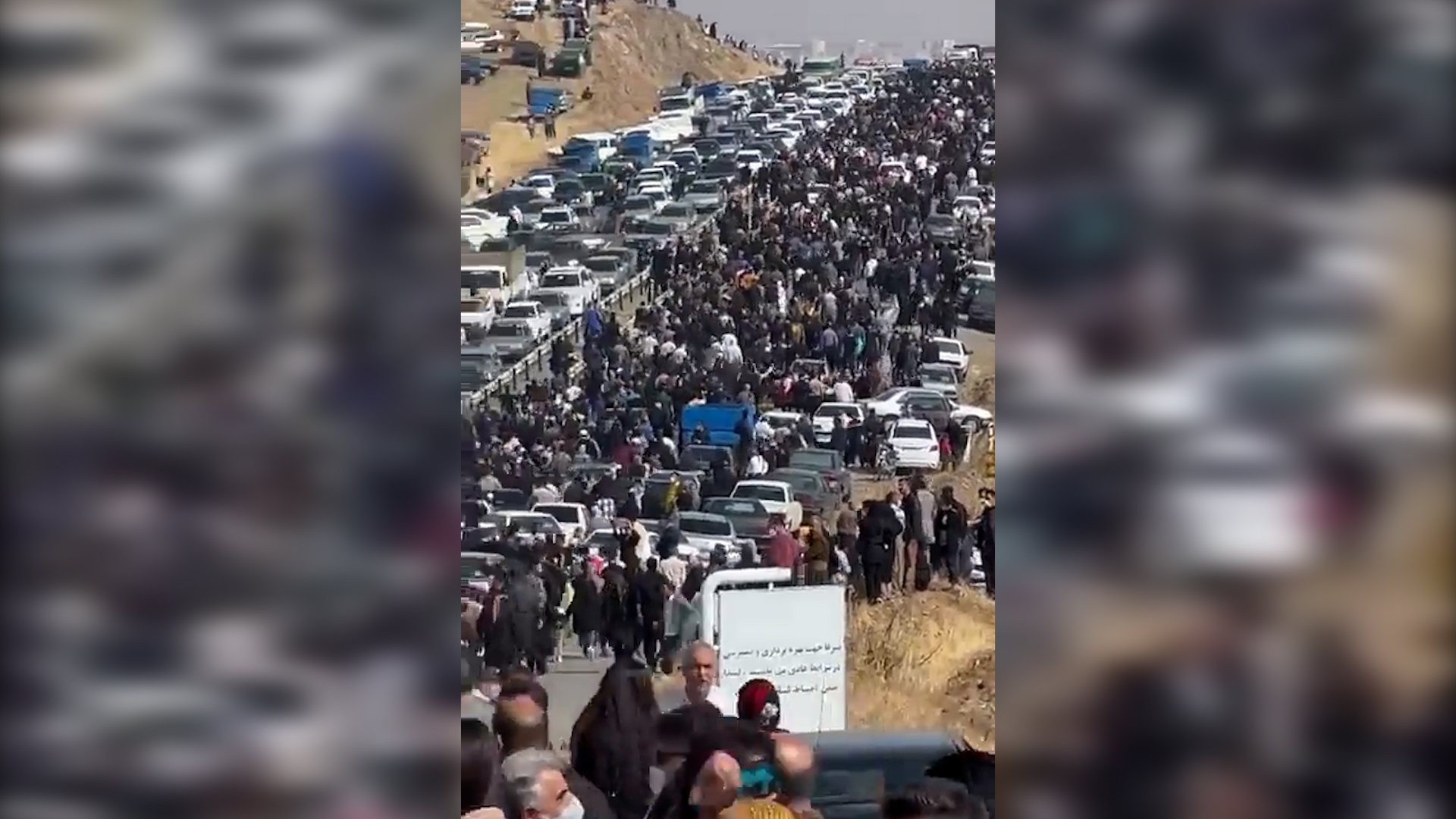In a sign of the sustained momentum of anti-government protests in Iran, large crowds defied restrictions on Wednesday to visit the grave of Jîna Mahsa Amini, the 22-year-old who died after being beaten during her arrest by the notorious morality police
Footage posted by Iranian-Kurdish human rights organisation Hengaw showed huge crowds reported to be making their way to the Aichi cemetery in western Iran’s Saqqez city, where Amini is buried.
The rights group also posted footage it said was taken at Amini’s grave, where large crowds can be seen chanting “freedom” and singing in Kurdish.
The young woman’s death on 16 September triggered a wave of protests across Iran that the government has been unable to suppress despite violent crackdowns. Wednesday marked 40 days since her death, when many Muslim mourners traditionally gather to remember the dead and comfort surviving family members.
Amini’s family gathered at the cemetery for the remembrance in defiance of warnings by the government, who threatened them by saying they should “worry for their son’s life” if they went ahead with the service, the Guardian quoted activists as saying.
Video footage on social media showed thousands defying heightened security to join them, with some clips reportedly showing mourners walking over fields and hills to avoid police blockades on the way to the cemetery.
Meanwhile, protests reportedly continued in mainly Kurdish cities including Saqqez, Mahabad and Sanandaj (Sine), and in the capital city of Tehran, where university students chanted “jin, jîyan, azadî,” the Kurdish phrase meaning “woman, life, freedom,” that has become a slogan uniting protesters.
Hengaw also tweeted that “Sanandaj, Saqqez, Divandarreh, Marivan and Kamyaran are on widespread strike,” referring to cities in Kurdish-majority provinces in the west of Iran.



